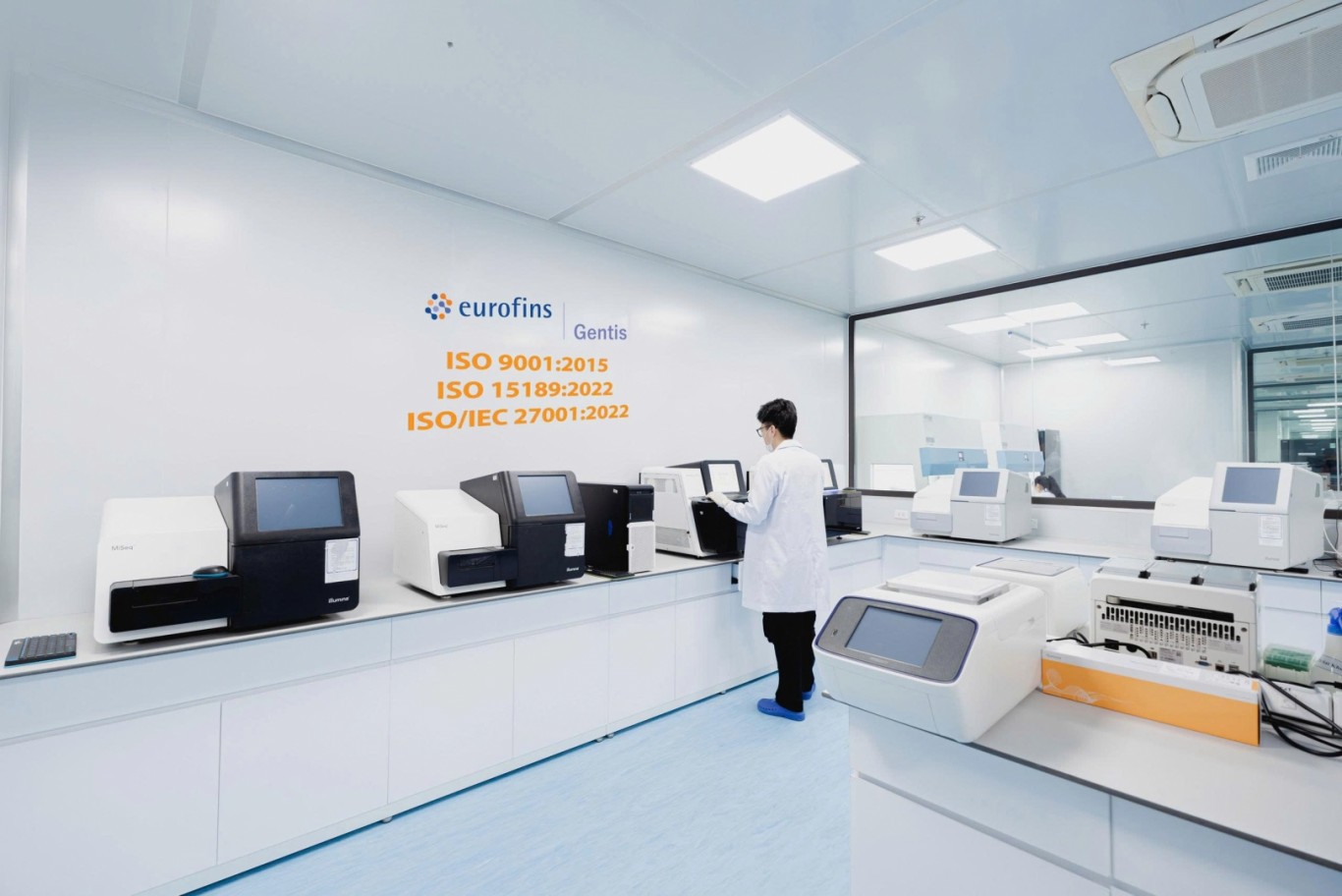The seminar to update information on testing services is a regular activity that GENTIS is implementing with partners and customers. Continuing the series of activities, on February 10, GENTIS held a seminar at Tan Dan General Hospital with the participation of nearly 20 doctors and nurses working at the hospital.
During the workshop, reporter Le Thi Hong Nhung gave a detailed introduction to the non-invasive prenatal screening test (NIPT) at GENTIS. Thereby, Ms. Nhung said that NIPT began to be put into clinical application in fetal malformation screening since 2011. NIPT can screen and detect many congenital malformation syndromes and provide accurate information of health status of the fetus. This method is done quickly and easily with results with more than 99% accuracy. In addition, pregnant women do not need to perform amniocentesis but only need to take 7ml of venous blood, which helps reduce the rate of miscarriage, amniotic infection or infectious diseases caused by amniocentesis. The NIPT testing process at Gentis has been accredited to ISO 15189:2012 by the BOA Quality Management Department, which is the standard that specifies the quality and capacity requirements for medical laboratories.
Ms. Nhung also recommends that the only subjects to perform NIPT test are pregnant women in the first 3 months of pregnancy and the second 3 months of pregnancy, especially high-risk subjects such as over 35 years old, with birth results. High-risk chemotherapy and ultrasound, history of malformed pregnancy or unexplained stillbirth, family history of genetic disease, etc.
In addition, reporter Le Thi Hong Nhung also introduced an overview of the mechanism of action and clinical application in Thalassemia test. Thalassemia is a genetic blood disease with a very high incidence in the world and in Vietnam, affecting the race because of its recessive genetic nature. Currently there are more than 20,000 people with Thalassemia requiring lifelong treatment and each year about 8,000 more children are born with Thalassemia, of which about 2,000 children have severe disease and about 800 children cannot be born due to edema. pregnant. Currently, in Vietnam and the world, there is no testing unit that can confirm 100% detection of all genes that cause Thalassemia disease, Ms. Nhung said. But at GENTIS alone, the disease detection rate is very reliable, up to 99.9%, but there is still a small percentage of rare genes that have not been detected. However, the detection rate of 99.9% can be said to be a high number and the coverage is also very wide.
In addition, reporter Tran Thi Quynh Trang reported in detail on newborn screening tests and HPV cervical cancer tests. According to recent statistics from WHO, more than 8 million babies have birth defects right after birth, Ms. Trang said. Therefore, the most effective solution for early detection of these malformations is to perform newborn screening. This is a very important test method in the early stages of a child's life. Through screening results, we can detect potential defects or diseases early for timely treatment. Ms. Trang shared that 48 hours after birth is the best time to conduct screening. The test sample is blood taken from the heel so it will not cause pain to the child. Performing newborn screening can detect many diseases such as G6PD deficiency, adrenal hyperplasia, congenital hypothyroidism, ...
Cervical cancer was also shared by reporter Trang in detail during the workshop. Ms. Trang said that cervical cancer is a very common disease, in the world it is the third most common cancer in women and is common in developing countries. More than 90% of cervical cancer cases are related to HPV. HPV infection can cause many cancers such as vulvar, vaginal, penile, anal, oropharyngeal cancers, especially cervical cancer. To screen for cervical cancer most effectively, it is necessary to combine two methods: PAP (E-Prep) and HPV-DNA. Specifically:
- For the Pap test (E - Prep), the sample is checked for the presence of abnormal cells.
• For the HPV-DNA test, the sample is checked for the presence of HPV strains.
Due to their specific tasks, these two methods are not interchangeable, they complement each other to help doctors diagnose and provide appropriate treatment for each individual patient.
At the end of the seminar, reporter Nhung and reporter Trang shared more about the support directions for the Hospital when approaching testing to customers. The seminar was very lively and many opinions were raised. After the service report of GENTIS to Tan Dan General Hospital, we hope that the doctors and nurses will provide customers with many tests that are useful to their health status and contribute to raising awareness of health care. of the Vietnamese people.











